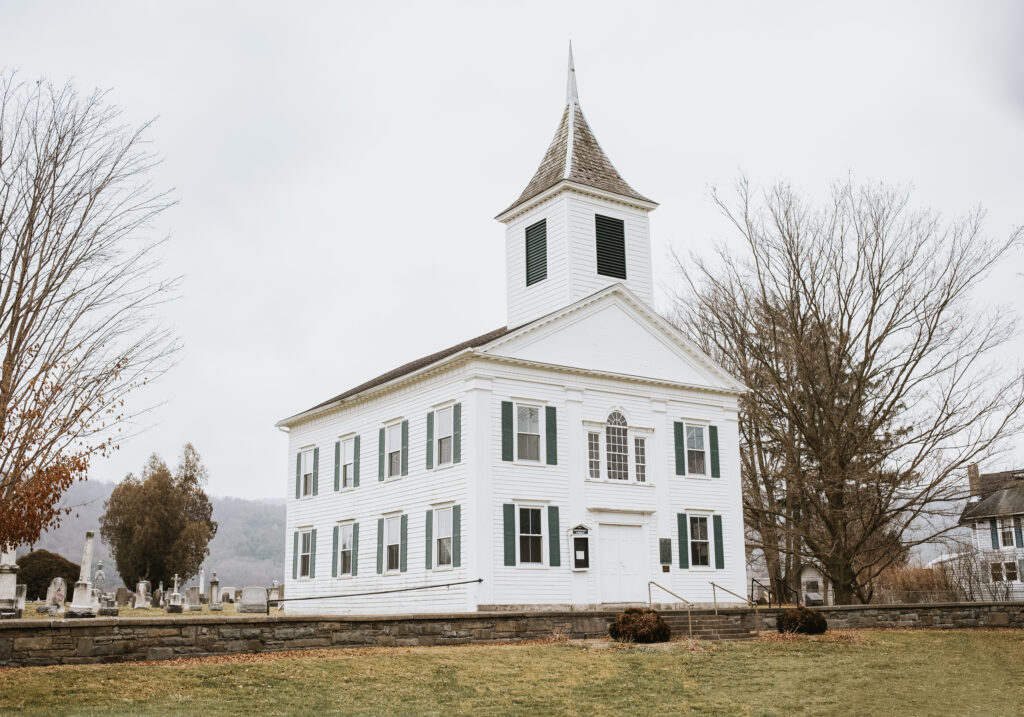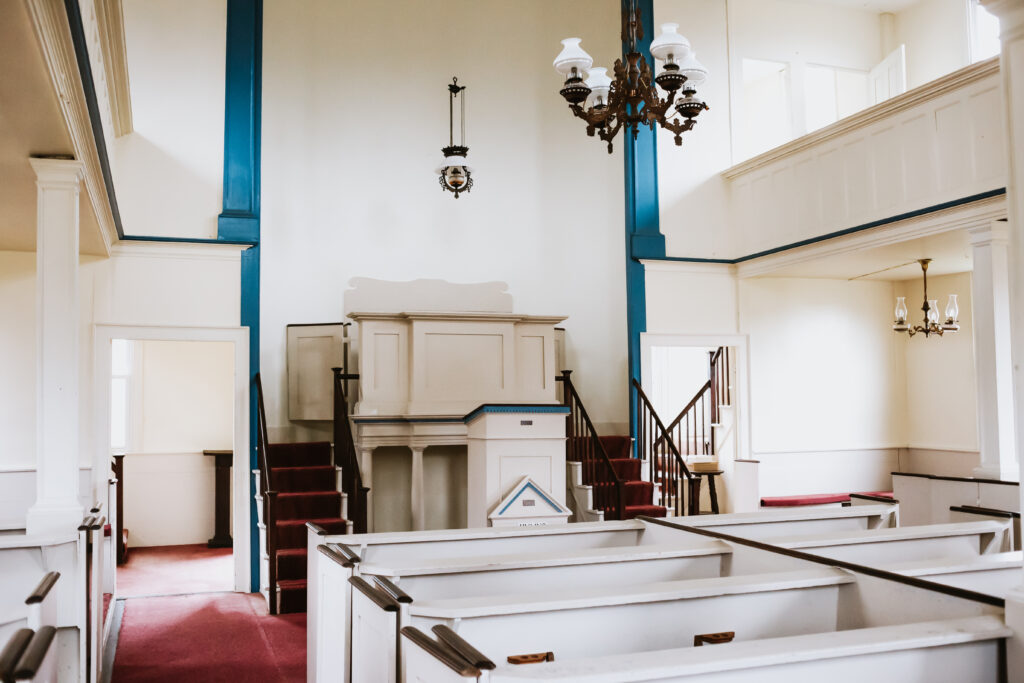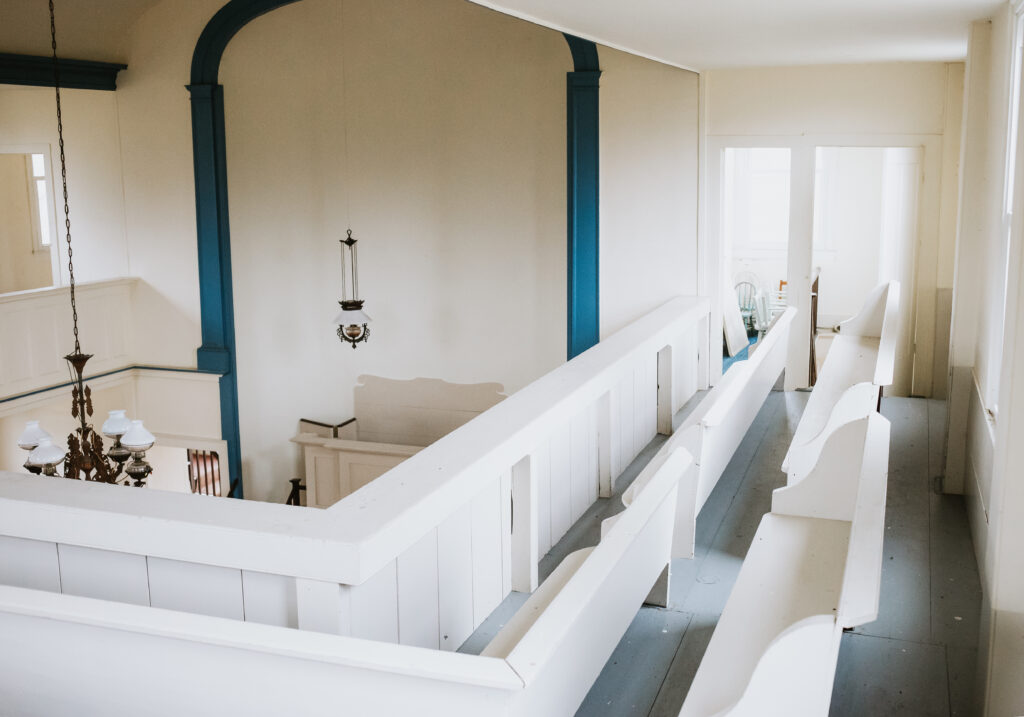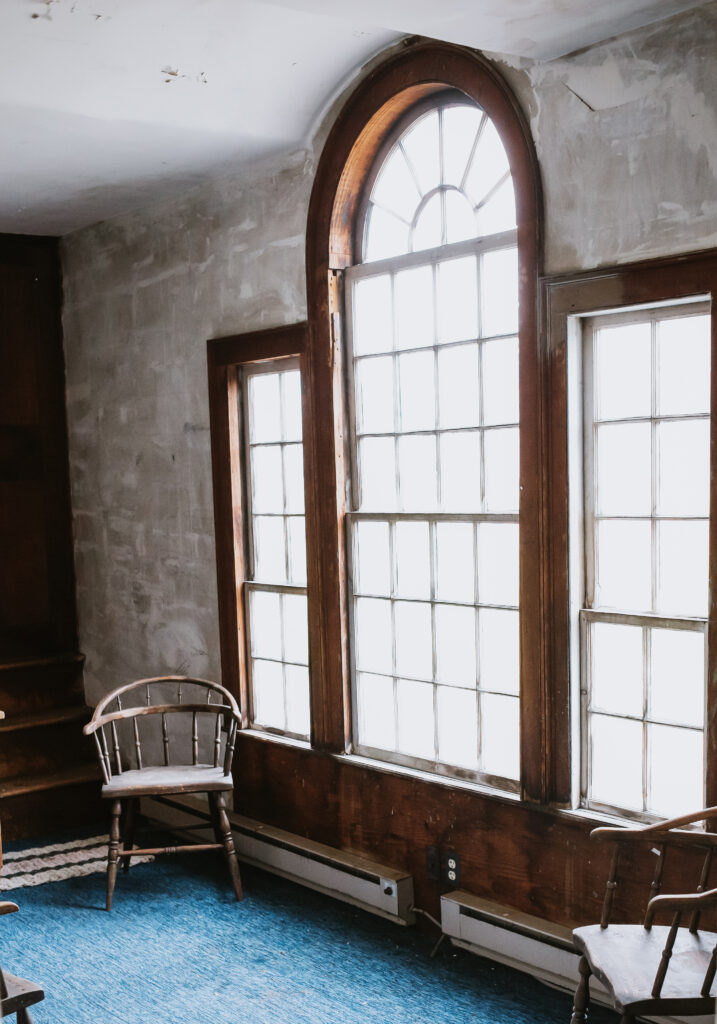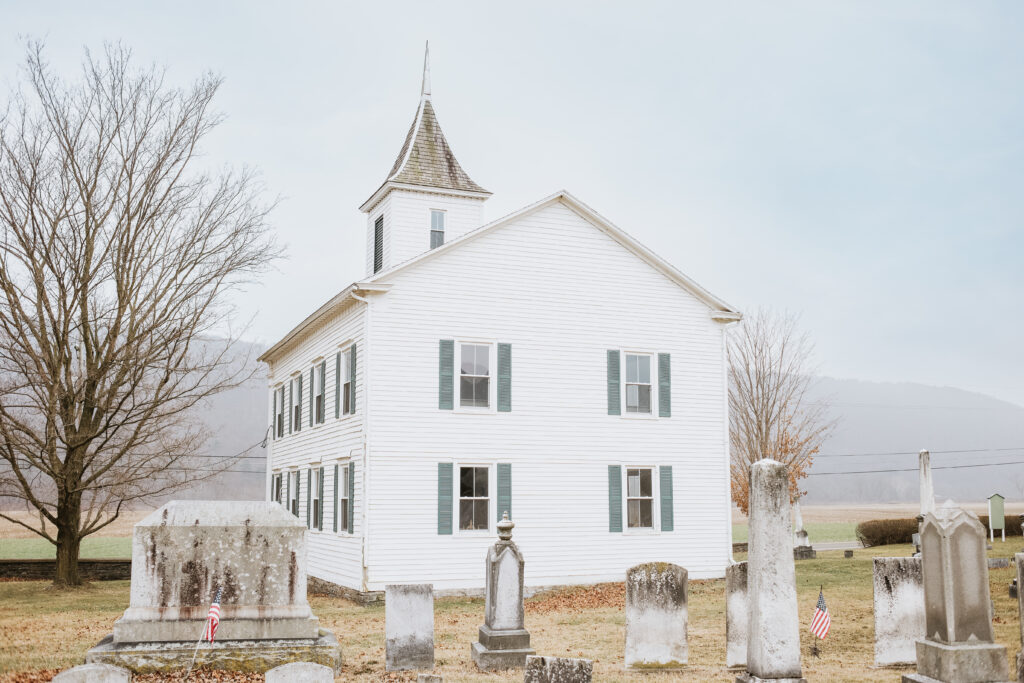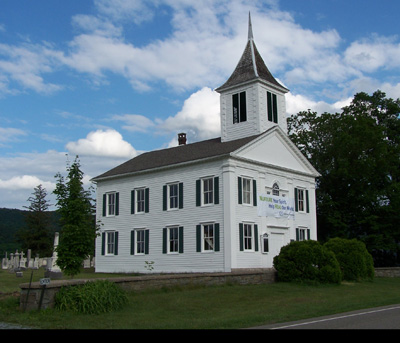Our History
Check out posts in our new UUCAS History Blog!
The Old Sheshequin Church
Universalism in this country began in the late 1700s and was first preached in New England and in Philadelphia. At a conference in Winchester, NH, in 1803, the two groups joined in doctrine and published the Winchester Profession of Belief.
Sheshequin Congregation
Universalism was first brought to this area by the Rev. Noah Murray, who began preaching in Sheshequin in 1787. His message attracted some of the prominent settlers of that community. In 1793, fearing the spread of a dreadful heresy, the Rev. Moses Park and Deacon Joseph Kinney from the local Baptist congregation met with Murray to try to change his beliefs. After a lengthy theological debate, however, Murray remained steadfast in his faith, and Park and Kinney were converted to Universalism.
After his conversion Rev. Park began preaching universal salvation to his Baptist congregation. Some members left the congregation, but the majority liked what they heard and stayed. The Universalist Society of Sheshequin was organized about 1808.
The Society did well at first until the deaths of both Noah Murray (1811) and Moses Park (1817). After that, a certain eloquent speaker by the name of Squire Street arrived and was well accepted at first. He was just ahead of his reputation, for he had been expelled from the Association in New Hampshire, being guilty of a “sad misdemeanor.” Just before the news of his expulsion from the Association reached Sheshequin, he stepped on a boat and went down the Susquehanna, never to return. He was followed by David Gibson, also a gifted speaker, who briefly gained the confidence of the congregation. He was also able to gain generous money favors, but promptly resumed his old habit of intemperance and was fired. By then, the church members were suspicious of any unknown theologian who came to preach.
Fortunately, a highly respected circuit rider, the Rev. Nathaniel Stacy, arrived and preached in Sheshequin and in other towns in the county. His preaching seemed to revive the Society, and he visited this area for four consecutive years.
By 1822, the Society had grown to the point that a building was needed. Construction of a meeting house was begun in 1822 and completed in 1827, and it was dedicated in 1834. It was built adjacent to the pre-existing Sheshequin Cemetery. The term “meeting house” was used instead of “church” as a rebellion against the European policy of state religions.
A Sunday School was established in 1830 by Julia Kinney Scott, who was also widely known in Universalist circles as a poet. In 1833, the names of 66 members were recorded, and a set of “Rules and Regulations” was created. The Charter of Incorporation was approved on October 1, 1840, and a Constitution was written in 1843.
In 1864, the church had a library of more than 150 volumes. The pulpit was filled by a number of different preachers. From the 1870s through the 1880s, membership ebbed and flowed, but in the 1890s there was a gain in membership and attendance. During this time, the beloved Rev. Myra Kingsbury, a Sheshequin native, preached until her death in 1898.
At various times, the Sheshequin Church was the “mother church” to churches in Athens, Towanda, Standing Stone, Springfield, Troy, Orwell Hill, Sylvania, Monroe, and Mansfield.
In 1902, the Oscar and Georgia Stevens family moved to Sheshequin, and family members were church organists for nearly 100 years. Georgia was the first organist, and she was followed by daughters Dorothy Smith and Marion Jones.
In 1914, the Sheshequin Valley Cemetery Association was established, separating the cemetery from the church. The Association is supported by bequests and the sale of cemetery plots.
Church membership was stable during the 1900s, and a succession of ministers served the congregation.
Athens Congregation
The First Universalist Society of Athens was organized in 1849. Silas Warren Park, a son of the Rev. Moses Park, was one of its leaders. The Rev. Schuyler J. Gibson, who at that time was serving the Sheshequin congregation, helped the church get started. The first membership list, dated 1849, contained 12 names. By 1854 there were 39 members.
The congregation wasted no time in constructing a meeting house. The lot on North Street was purchased, donations were solicited from members and the local community, and the meeting house was constructed about 1852.
Over the next fifty years, there were brief periods of dormancy, but the membership remained steady at between 25 and 50 members. Membership grew to over 100 during the pastorate of the Rev. Will A. Kelley (1904-1910).
The congregation adopted the name “The Church of the Universal Brotherhood” in the 1880s.
By the 1920s the congregation was unable to fund its own full-time minister. They joined with the other three congregations in the North Branch Association – Sheshequin, Standing Stone, and Towanda – in supporting a single minister, who preached at all four sites. Athens and Towanda had services every week, and Standing Stone and Sheshequin had services on alternating Sundays.
In November, 1947, the trustees of the Athens congregation, whose membership had dwindled significantly, voted to sell their meeting house to the local Christian Scientist Society. The remaining members attended services with the Sheshequin congregation.
n 1961, the Unitarians and Universalists merged, forming the Unitarian-Universalist Church. In 1965, the Athens Church, known as the Church of Universal Brotherhood, officially dissolved, and its nine members transferred their membership to the Sheshequin Church. In 1991, the Athens church was purchased, returning the 140 year old building to its Universalist roots. Services are held weekly in the Athens Church, and the Sheshequin Church is a summer and special occasion meeting house.
Unitarian Universalist Consolidation
In 1961, the Unitarian and Universalist denominations merged, forming the Unitarian Universalist Church. The merger combined the Universalist emphasis on the doctrine of the love and goodness of God, with the Unitarian emphasis on reason and rationality in religion.
Today Unitarian Universalism is a liberal religion with Judeo-Christian roots. It has no creed; instead it advocates freedom of belief and the affirmation of the worth and dignity of all human beings.
UUCAS
In 1965, the Athens congregation formally dissolved, and its nine members transferred their membership to the Sheshequin congregation. In 1991, the congregation bought back the Athens meeting house, returning the 140-year-old building to its Universalist roots. In 1992 the congregation, in recognition of the importance of their two locations and the significance of the merger of two traditions voted to adopt the name “Unitarian Universalist Church of Athens and Sheshequin.”
For many years services were held from September through June in the Athens meeting house, and in July and August in the Sheshequin meeting house.
In 2022, the congregation agreed that it could no longer maintain its beloved meeting house in Sheshequin and voted to sell it. The building was sold in 2023.
When the COVID-19 pandemic struck in March, 2020, UUCAS began sharing worship with the congregation in Cortland, NY, via Zoom. When it was safe to meet in person again, UUCAS installed video equipment to enable fully interactive hybrid (in-person and Zoom) services, which continue to this day. We continue to share worship with the Cortland congregation and occasionally with other Unitarian Universalist congregations.
UUCAS offers a warm and welcoming community for all people who practice ethical living as the supreme witness of religion.
The Historic Sheshequin Meeting House
The Sheshequin Universalist Church , though no longer owned by UUCAS, still stands almost unchanged as the oldest plank and siding church in this area of Pennsylvania. Set in the midst of farmland, it is on the east side of the Susquehanna River, 6.2 miles south of the Athens Bridge and 2 miles north of the Ulster Bridge. Take a video tour of the Sheshequin building.
